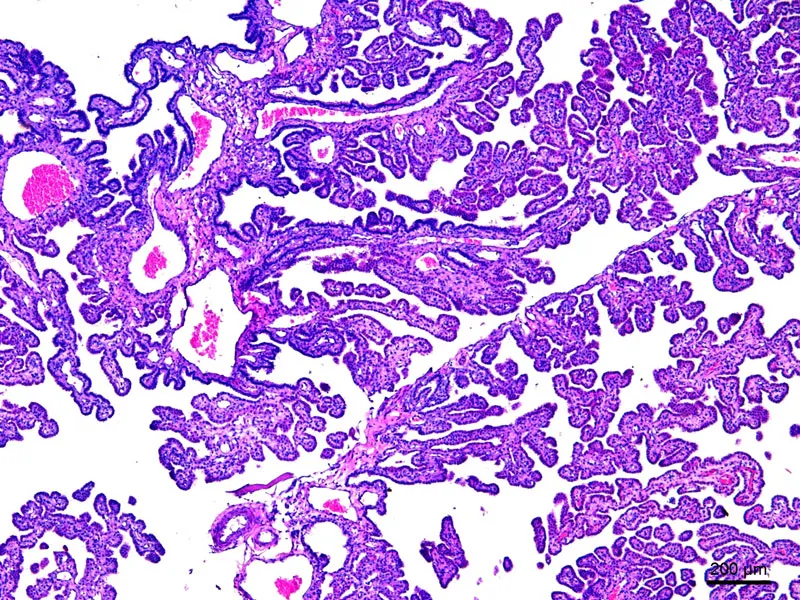Papillary Urothelial Neoplasm of Low Malignant Potential (PUNLMP) in a Dog Based on the WHO/ISUP Consensus Classification with Urine Cytology Discrepancy
DOI:
https://doi.org/10.24070/bjvp.1983-0246.008005Keywords:
dog, papillary urothelial neoplasm, cytology, histopathologyAbstract
In the present study, a case of papillary urothelial neoplasm of low malignant potential (PUNLMP) is described in a 7-year-old male terrier dog based on the WHO/ISUP consensus classification with cytologic description in urine sample. Cytological findings including the presence of cell clusters and multi nucleated umbrella cells, increased nucleus/cytoplasm (N/C) ratio, cytoplasmic homogeneity, nuclear eccentricity, nuclear molding, anisokaryosis, and anisonucleosis were compatible with low grade papillary urothelial carcinoma. Histopathologically, cells within papillae were well arranged, and minimal nuclear atypical was observed. Significant mitotic activity and pleomorphism were not found. The thickness of the epithelium varied from normal to much thicker and umbrella cells were prominent. Based on these criteria, the final diagnosis was papillary urothelial neoplasm of low malignant potential (PUNLMP). These findings are important for following research on the treatment of canine urothelial tumors and will encourage the use of such tumors as a model for human disease.


